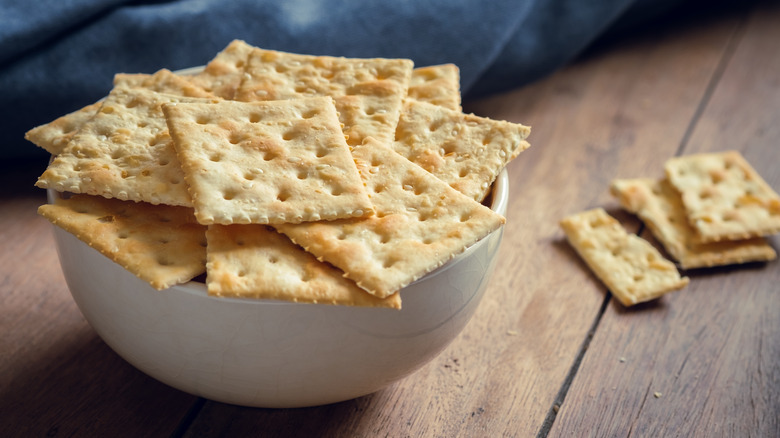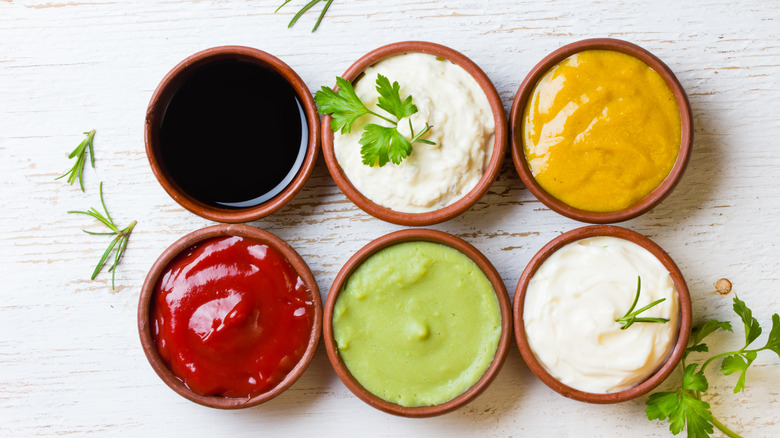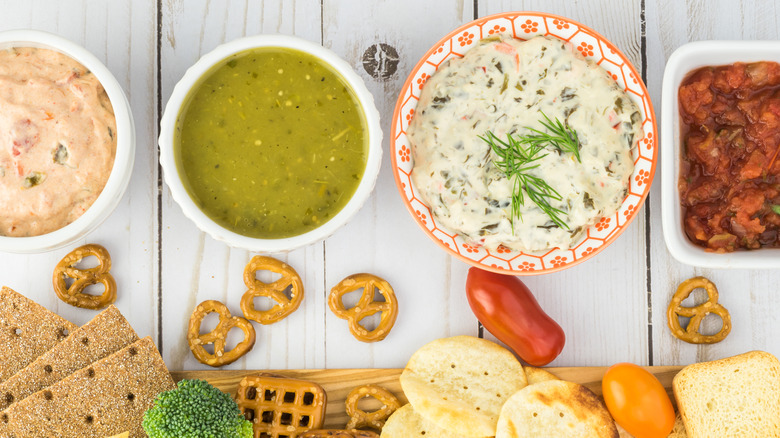Saltines Are The Unexpected Solution To Runny Sauces
Some sauces are naturally thicker while others are more on the liquid-y side. But whether it be a béchamel or a chimichurri — you never want the consistency to be watery. If that's the case, it's usually because the ratios of the ingredients are off. One of the easiest ways to fix this is to heat the sauce on the stove until the liquid reduces, however, it's not the best idea if you're working with salsa or chutney that has fresh herbs, lemon juice, or other ingredients you want to remain uncooked.
So what should you do if you can't thicken your sauce over the stove? There's always the option to add cornstarch or flour, but while both are effective thickening agents, they can also contribute a raw, pasty flavor, when they're not cooked into the sauce. For a much better-tasting and equally effective alternative, look no further than crushed-up saltine crackers.
What happens when you add saltines to a runny sauce?
If you ever get the chance to try the aji verde sauce at El Fish Shack in New York, the first thing you'll probably notice is its perfect consistency. That's because, as the restaurant's owner and chef Julian Medina revealed to Food & Wine, it has saltines mixed into it. Aji verde normally has jalapenos, cilantro, cheese, onion, garlic, mayo, and lime juice, but too much of the latter can make it runny. To preserve the citrusy flavor while also thickening the sauce, Medina adds saltines.
But it's not just aji verde that saltines can thicken. To use the technique on any other sauce, simply pulverize the saltines until they resemble breadcrumbs, then add them a little at a time into the sauce. As you stir, the cracker crumbs should absorb the excess liquid, thickening the sauce. You could technically use breadcrumbs, but saltine crumbs are much finer, so they'll dissolve in the sauce more readily.
How saltines fix runny sauces
Most people look to cornstarch and flour as a source of starch, but saltines are one too. In fact, Healthline reports that they're made up of 67.8% starch, nearly the same as white flour, which consists of 68% starch. The main difference between the two, aside from the 0.2%, is that saltines are already fully cooked which means you can add them to any sauce without having to cook away the raw flavor.
Saltines thicken the sauce because it's a starch, and starch absorbs and traps any liquid it comes in contact with. When this happens, starch granules expand while gelatinizing the liquid it has absorbed. This ultimately translates to a sauce with a much thicker consistency. The more starch you add, the more liquid will gelatinize, so the number of saltines you use in your sauce will determine how thick the final result is. For best results, start with a small amount and add gradually until you achieve your desired consistency.


